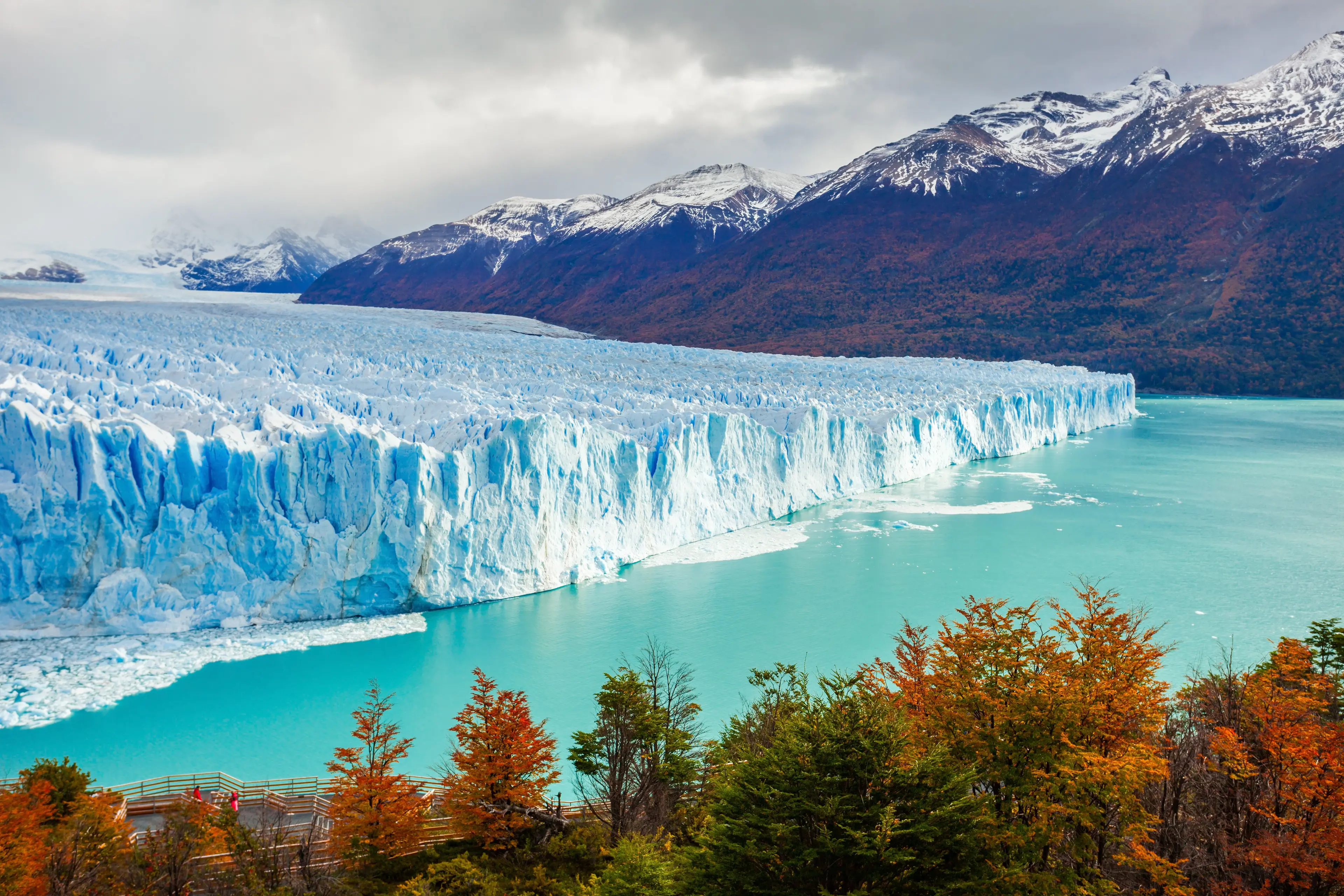5-Day Relaxing Sightseeing Itinerary for Couples in Argentine Patagonia
Argentine Patagonia, Argentina
5 days
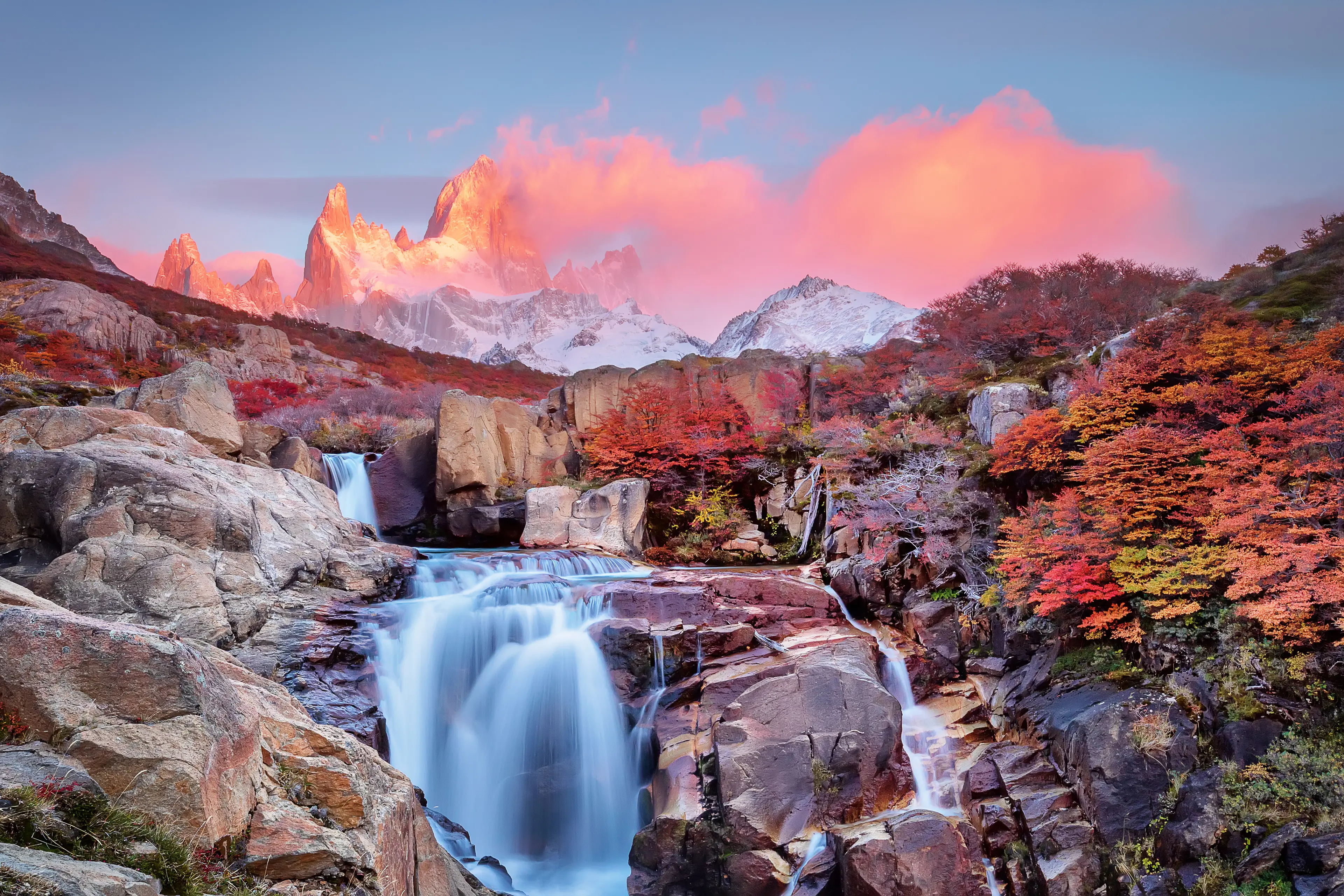
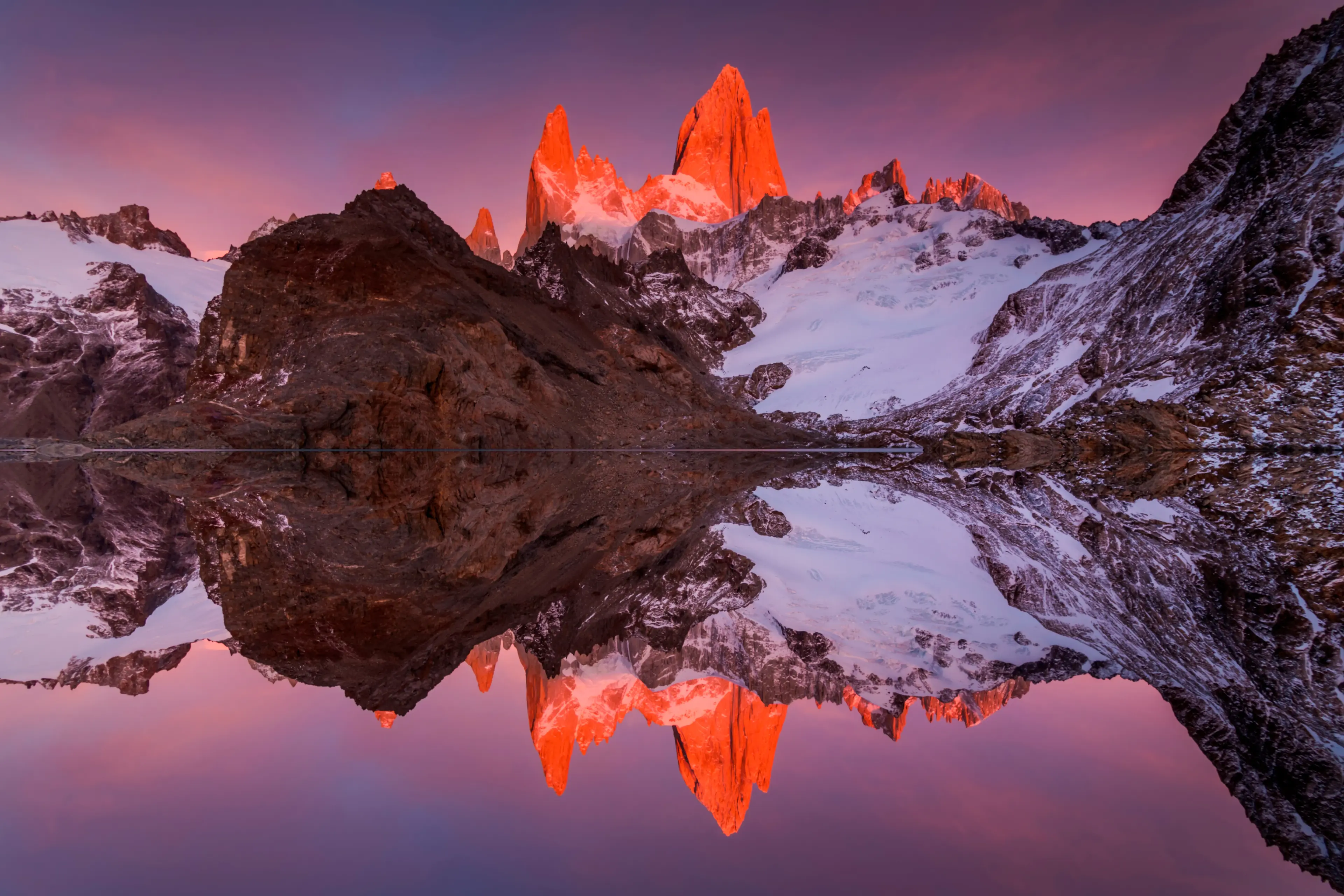
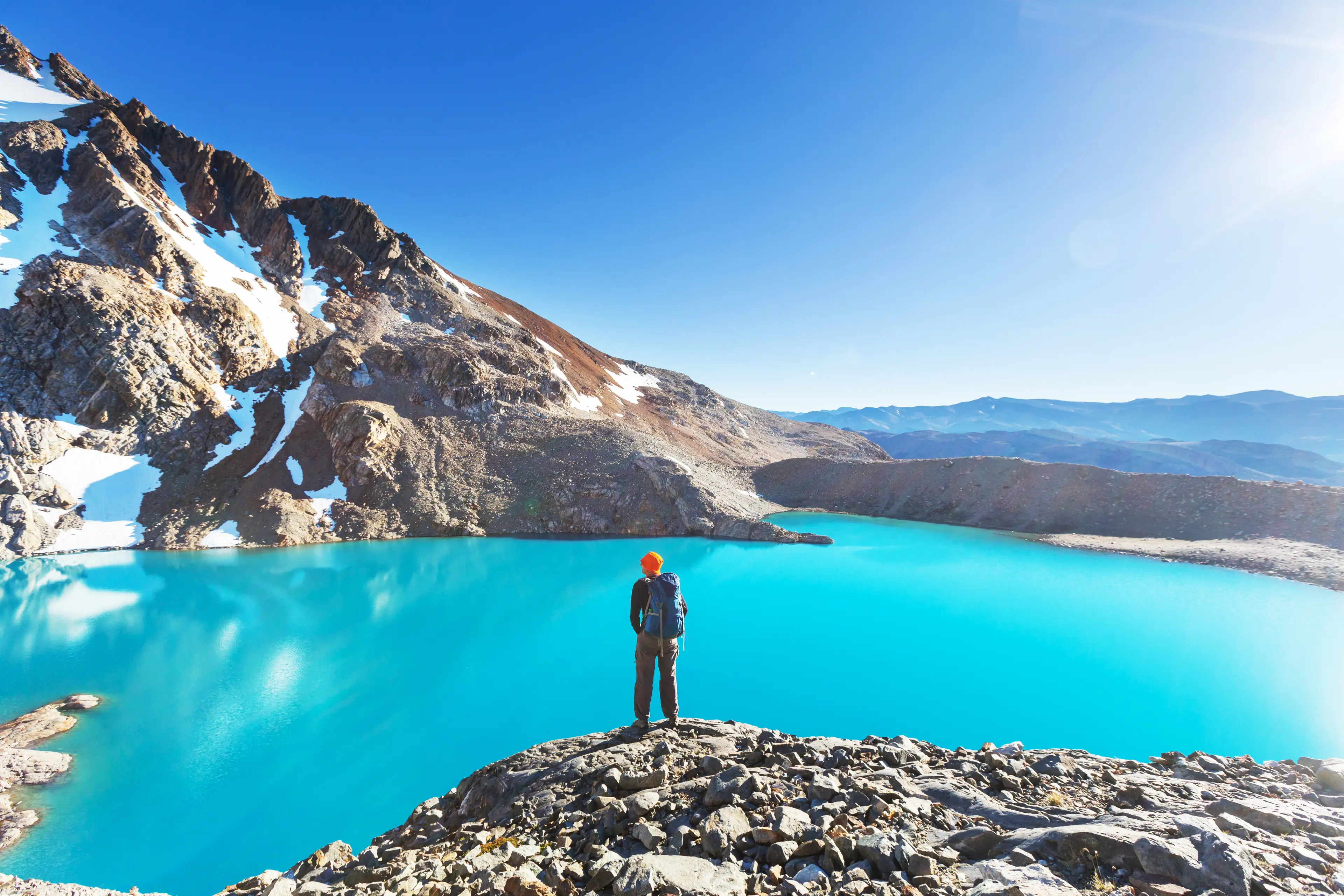
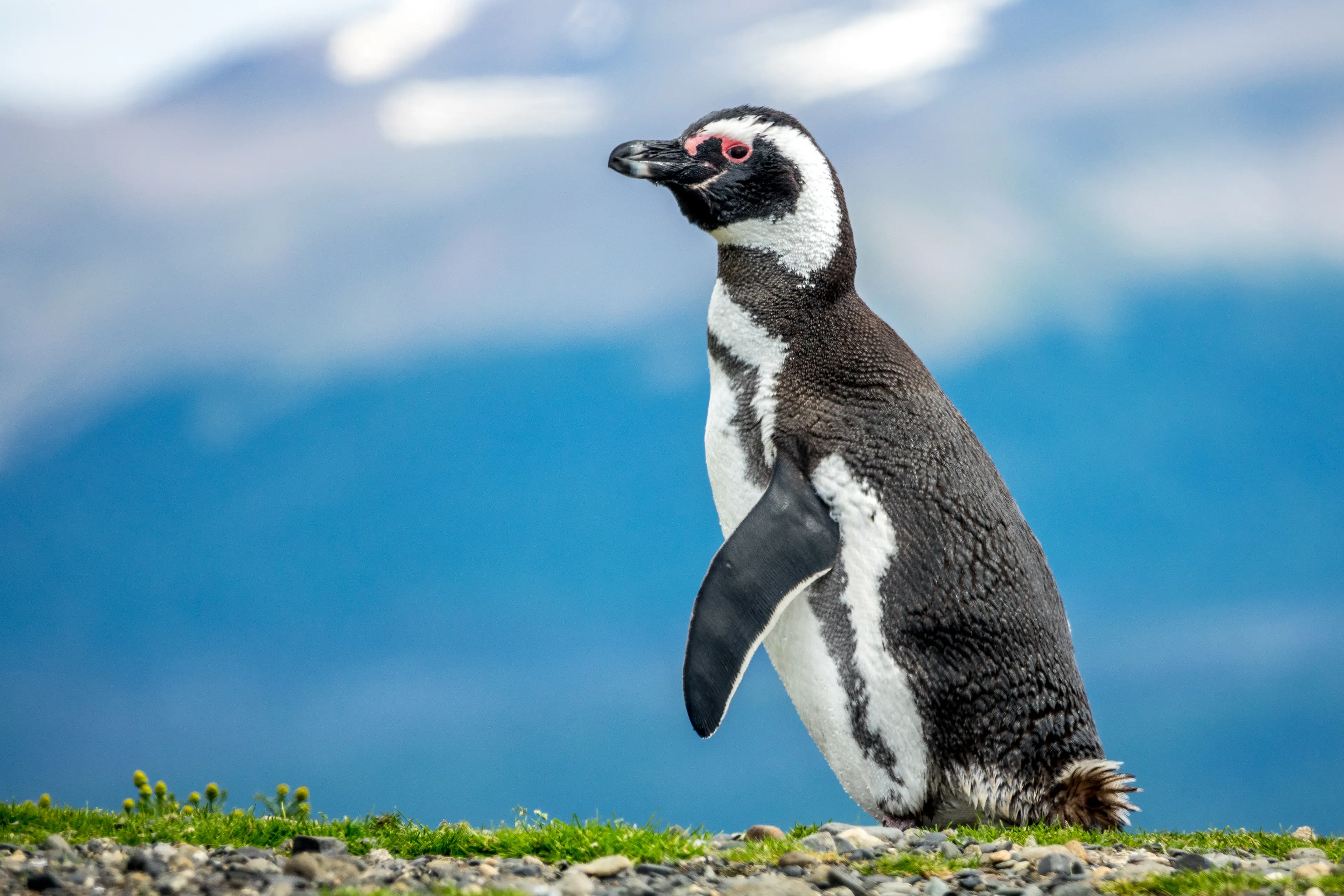
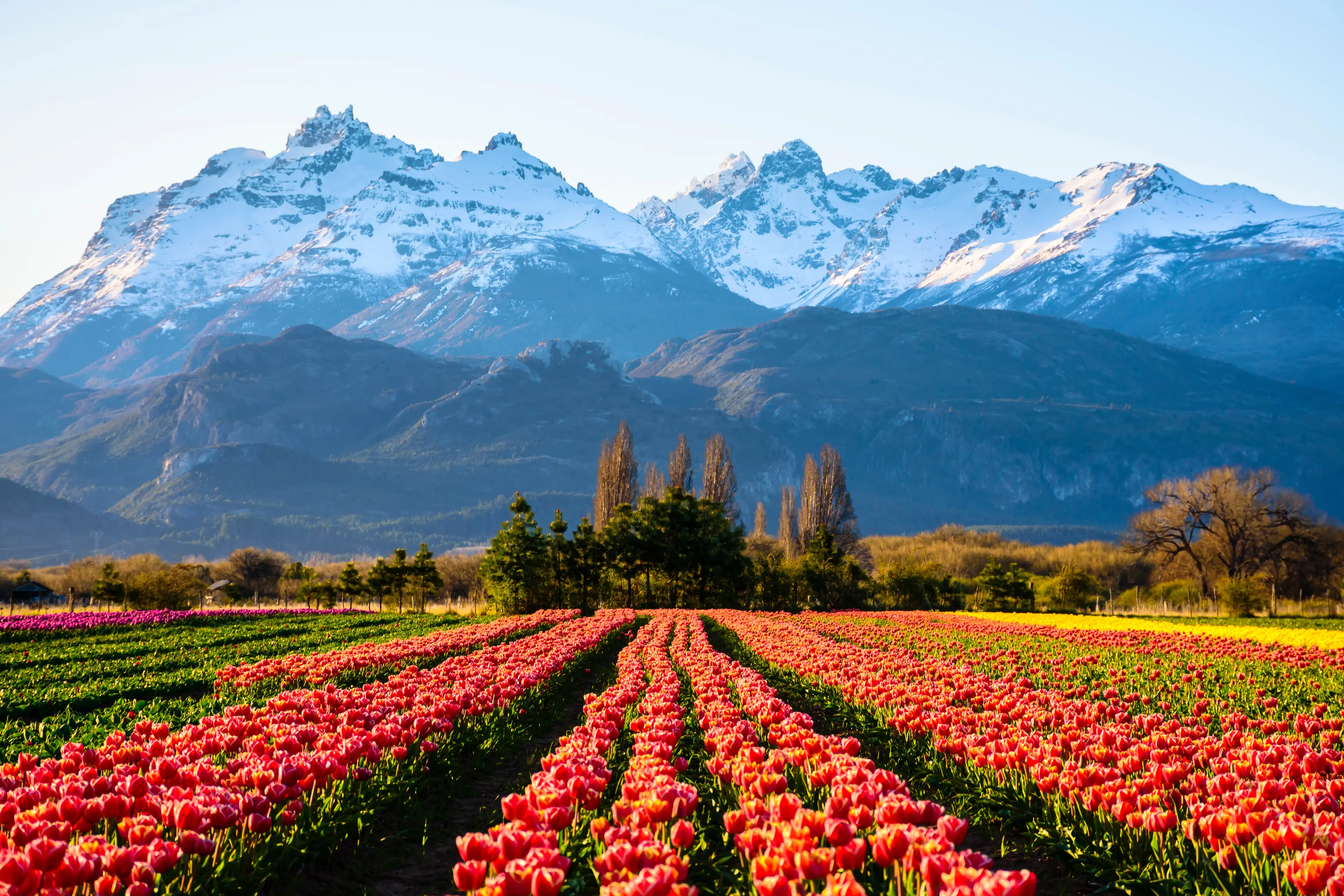
About Argentine Patagonia, Argentina
Experience the raw beauty of Argentine Patagonia, a breathtaking region of Argentina that offers a unique blend of natural wonders and cultural richness. Explore the stunning landscapes of the Andes Mountains, the shimmering glaciers of Los Glaciares National Park, and the diverse wildlife of Peninsula Valdes. Immerse yourself in the local culture of Ushuaia, the world's southernmost city, and savor the region's renowned Malbec wines and succulent lamb dishes. Whether you're an adventure seeker looking for thrilling hiking and skiing opportunities, or a nature lover wanting to witness the majestic beauty of the Perito Moreno Glacier, Argentine Patagonia offers an unforgettable travel experience. Don't miss the chance to sail the Beagle Channel or visit the mythical Tierra del Fuego. Argentine Patagonia is a destination that captivates with its untamed beauty and promises a journey of a lifetime.
5-Day Itinerary
Day 2
Discovering the Natural Beauty of Bariloche
Morning
Visit the iconic Cerro Campanario, take a chairlift to the top and enjoy panoramic views of the surrounding lakes and mountains.
Lunch
Have lunch at a local restaurant, trying out trout, a local delicacy.
Afternoon
Explore the Llao Llao Municipal Park, enjoy a leisurely hike or bike ride through the forest trails.
Dinner
Enjoy dinner at a local restaurant, trying out regional dishes made with locally sourced ingredients.
Evening
Relax at your hotel, perhaps enjoying a spa treatment or a dip in the pool.
Day 3
Journey to El Calafate and the Glaciarium
Morning
Travel to El Calafate, known for its proximity to the Perito Moreno Glacier. Take a leisurely walk around the town.
Lunch
Enjoy a hearty Patagonian stew, known as cazuela, at a local restaurant.
Afternoon
Visit the Glaciarium, a museum dedicated to glaciers, and learn about their formation and impact on the environment.
Dinner
Dine at a local restaurant, trying out Patagonian lamb or king crab, paired with a local Malbec.
Evening
Relax at your hotel, enjoying the stunning views of the Patagonian steppe.
Day 4
Close Encounter with the Perito Moreno Glacier
Morning
Visit the iconic Perito Moreno Glacier. Take a boat tour to get up close to the glacier and watch ice calving.
Lunch
Enjoy a picnic lunch with a view of the glacier.
Afternoon
Explore the walkways around the glacier, taking in the stunning views and listening to the sounds of the ice cracking.
Dinner
Enjoy dinner at a local restaurant, trying out regional dishes made with locally sourced ingredients.
Evening
Relax at your hotel, perhaps enjoying a spa treatment or a dip in the pool.
Day 5
Ushuaia and the Beagle Channel Adventure
Morning
Travel to Ushuaia, the southernmost city in the world. Take a leisurely walk around the town, visiting the port and the main street.
Lunch
Enjoy a seafood lunch at a local restaurant, trying out king crab, a local delicacy.
Afternoon
Take a boat tour of the Beagle Channel, visiting the iconic Les Eclaireurs Lighthouse and watching sea lions and penguins.
Dinner
Dine at a local restaurant, trying out Patagonian lamb or king crab, paired with a local Malbec.
Evening
Relax at your hotel, enjoying the stunning views of the Beagle Channel and the surrounding mountains.
Attractions in Itinerary (10)
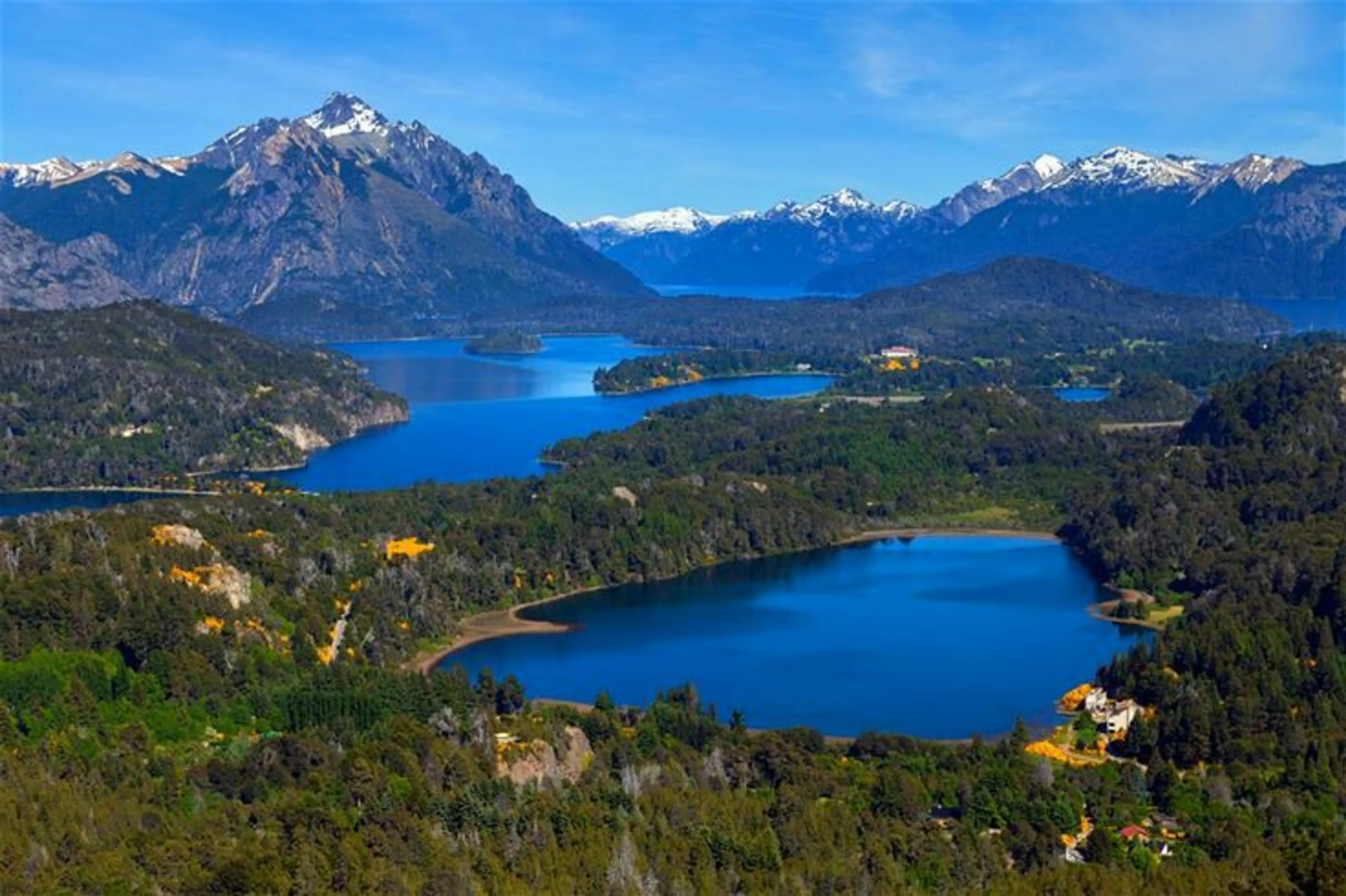
1Lake Nahuel Huapi
A large glacial lake surrounded by the Andes Mountains, offering activities like boating, fishing, and hiking.
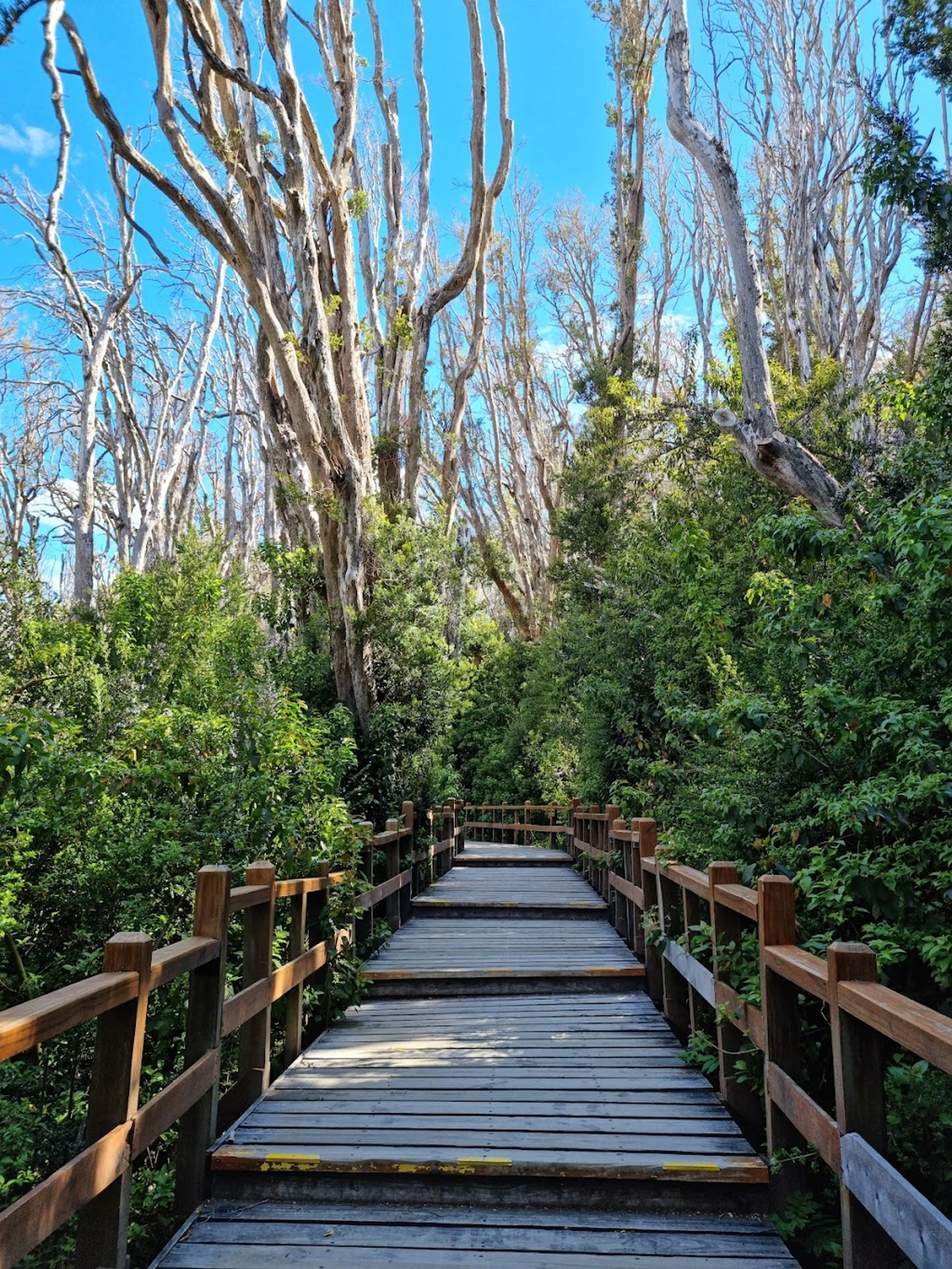
2Arrayanes Forest
A unique forest known for its cinnamon-colored Arrayanes trees, accessible by boat or hiking trails.

3Victoria Island
A beautiful island in the middle of Lake Nahuel Huapi, offering hiking trails, beaches, and a variety of flora and fauna.

4Cerro Campanario
A mountain offering panoramic views of the surrounding lakes and mountains, accessible by a chairlift.

5Llao Llao Municipal Park
A park offering hiking trails, panoramic views, and a variety of local flora and fauna.
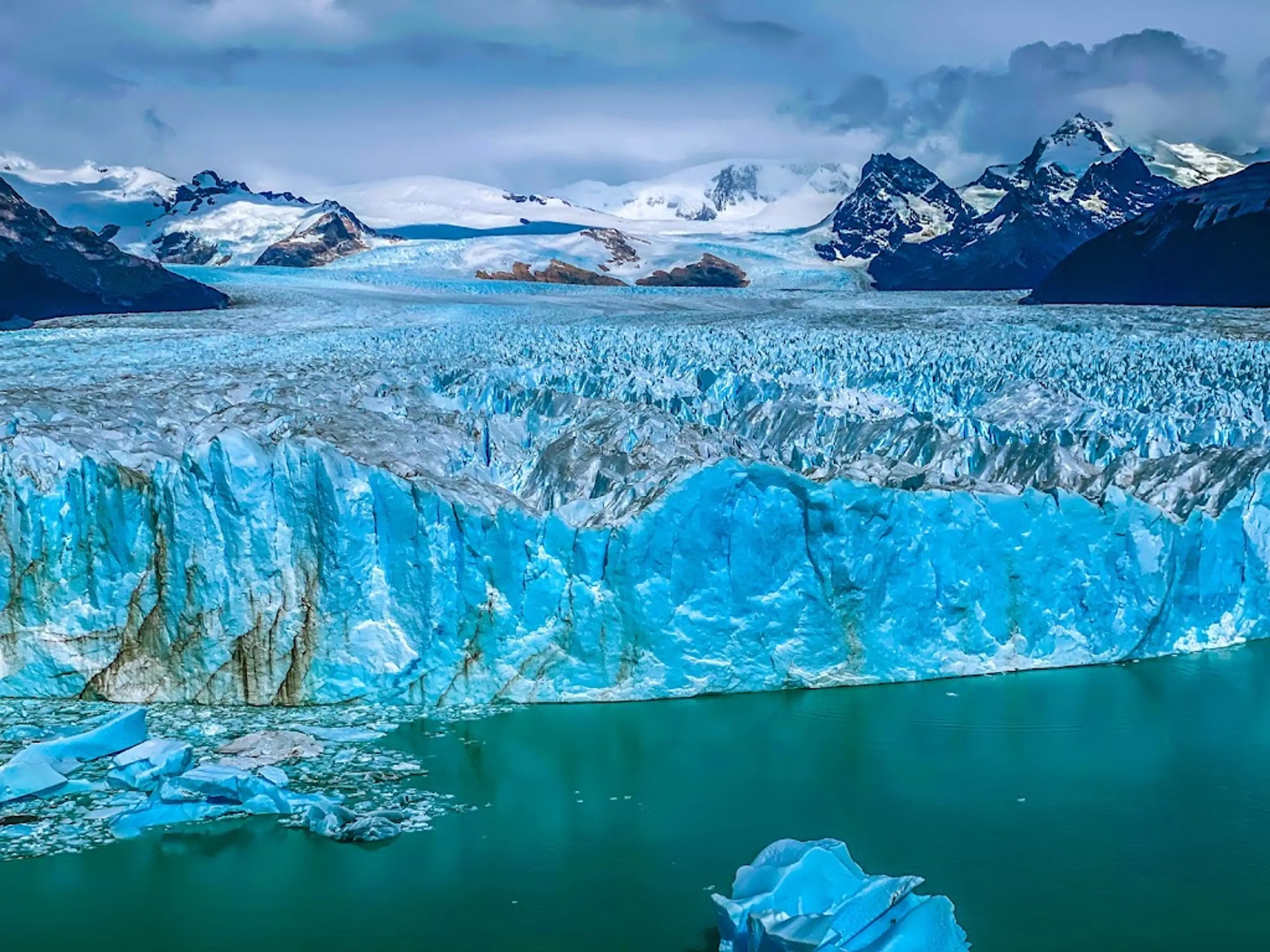
6Perito Moreno Glacier
One of the most popular tourist attractions in Argentine Patagonia, the Perito Moreno Glacier is a massive, sprawling sheet of ice that is a part of the Los Glaciares National Park.
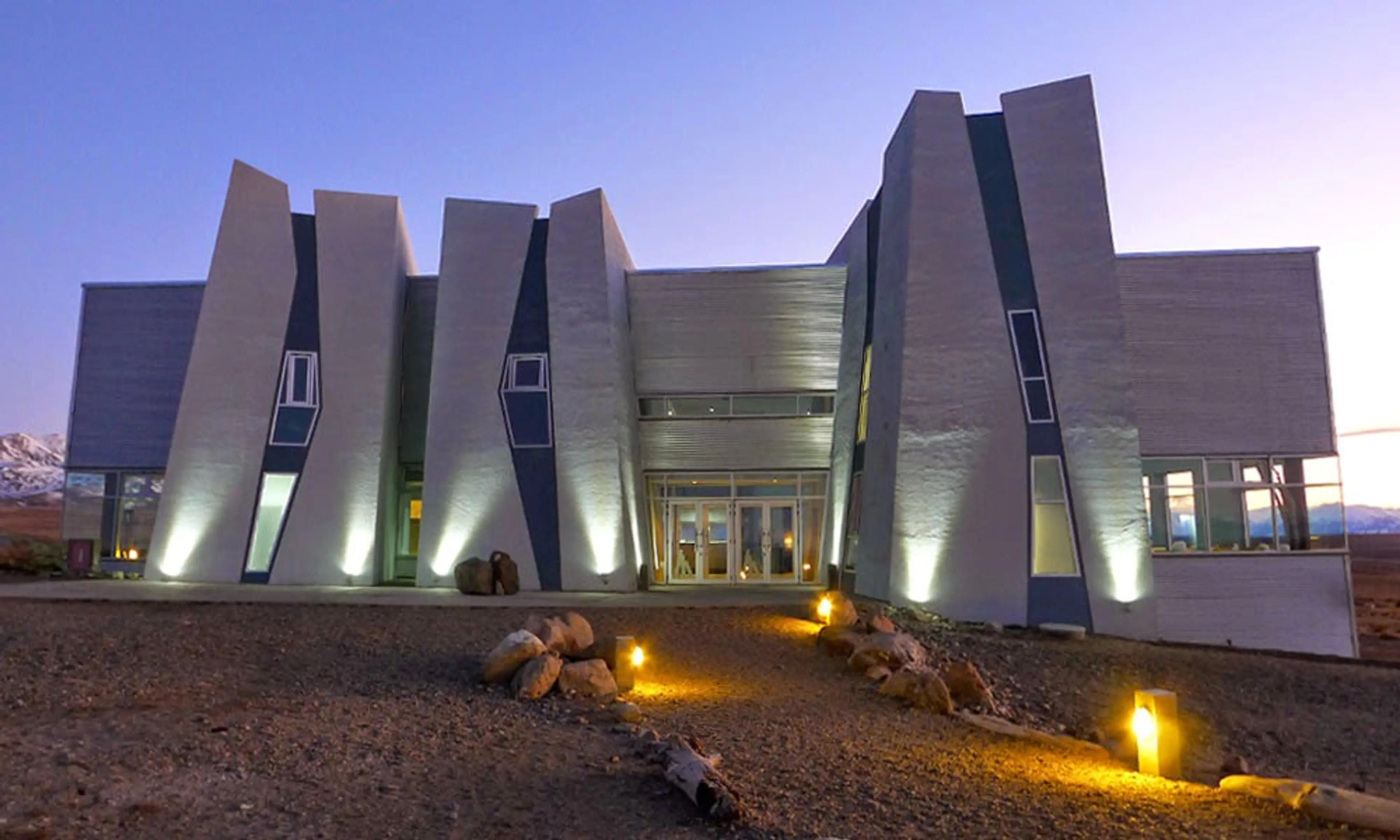
7Glaciarium
A modern glaciology center with interactive exhibits about glaciers. It also features a unique ice bar.
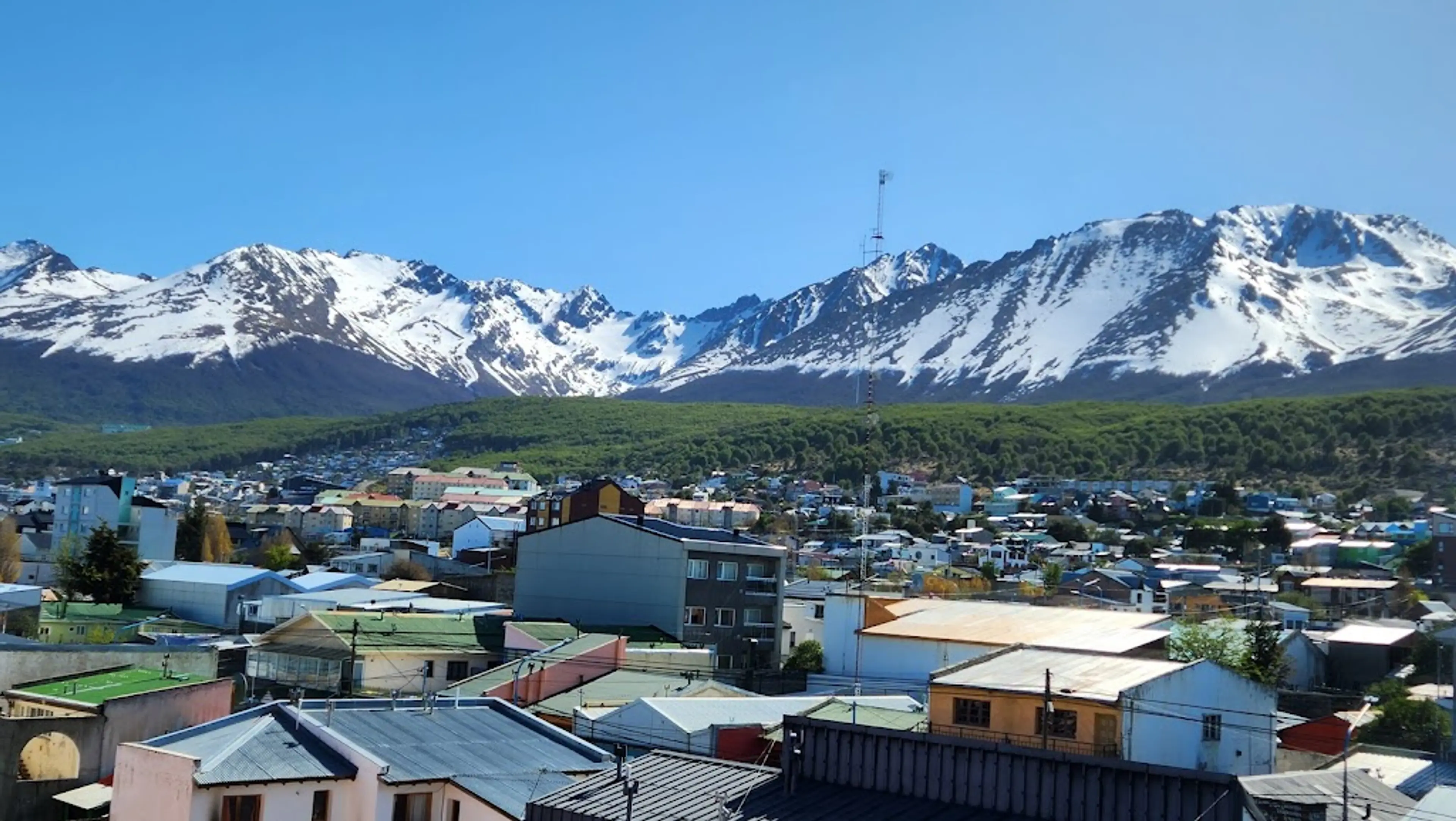
8Ushuaia
Known as the southernmost city in the world, Ushuaia offers a variety of outdoor activities such as hiking, skiing, and wildlife viewing.

9Beagle Channel
A strait in the archipelago island chain of Tierra del Fuego on the extreme southern tip of South America partly in Chile and partly in Argentina.
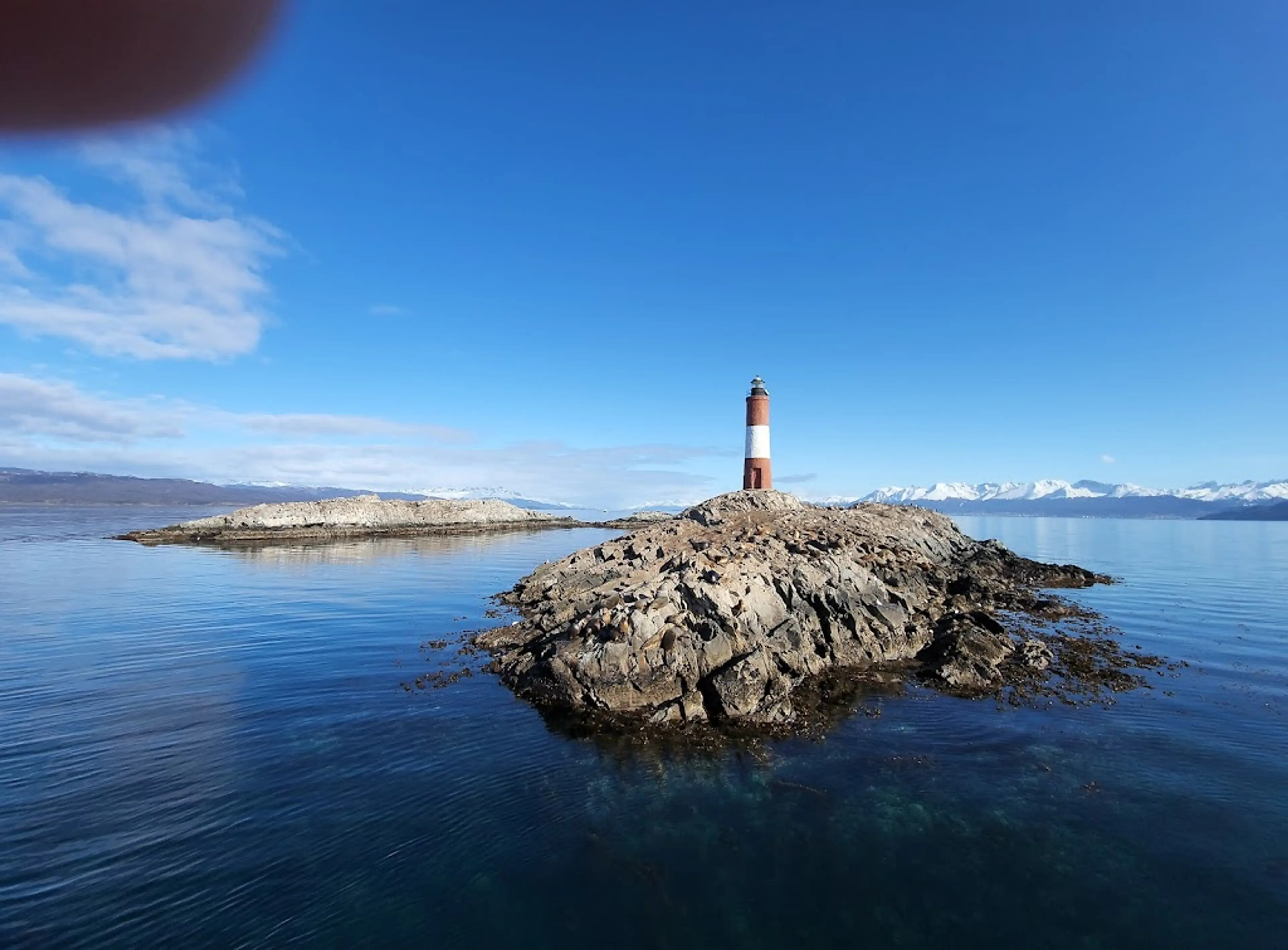
10Les Eclaireurs Lighthouse
A historic lighthouse located on the Beagle Channel, often visited on boat tours.
Local Food and Drinks (12)
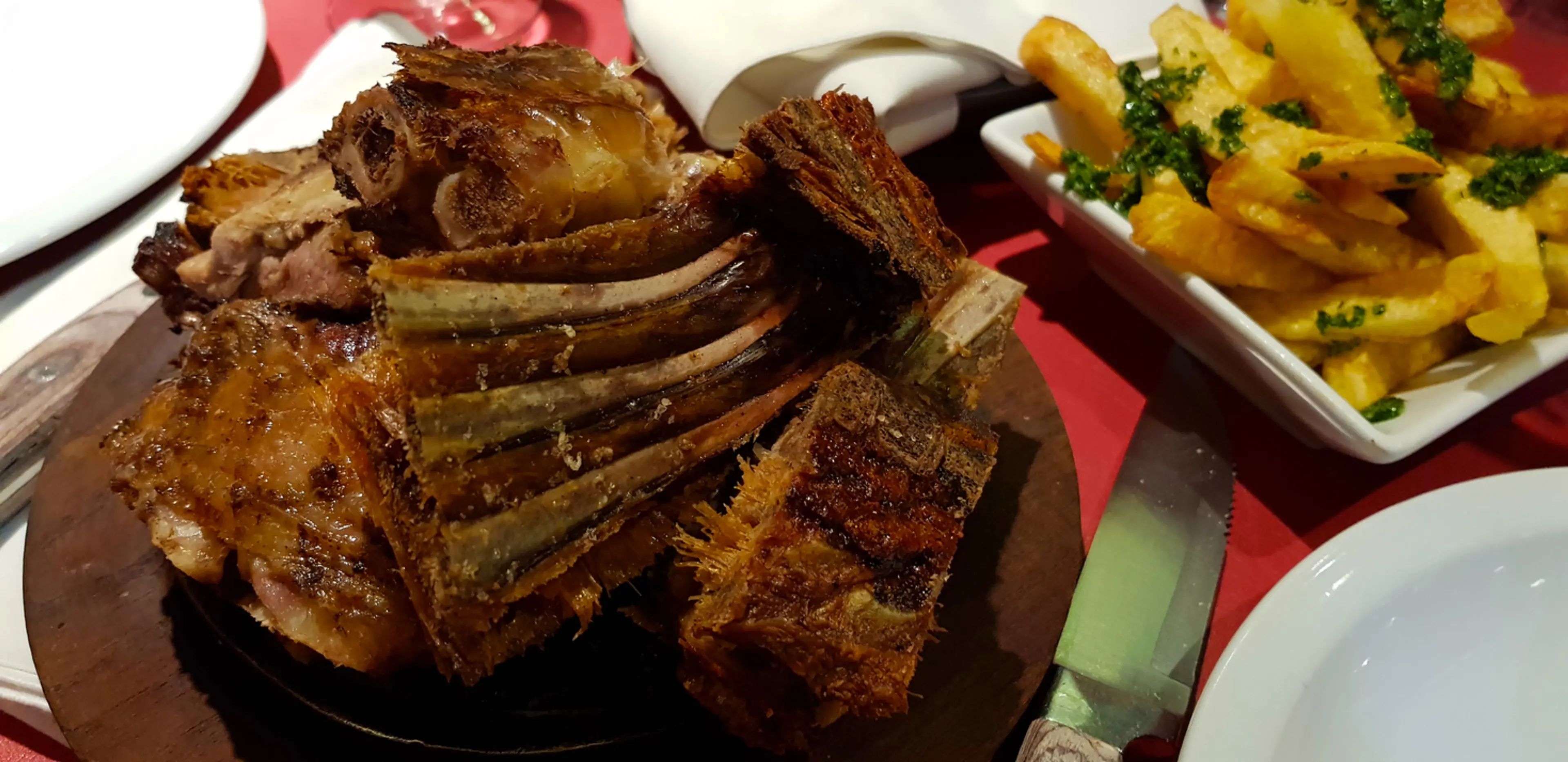
Cordero Patagónico
This is a traditional Patagonian dish made from lamb that has been raised on the local grasslands. The meat is typically roasted on a spit over an open fire, resulting in a tender, flavorful dish that is a must-try for any visitor to Argentine Patagonia.
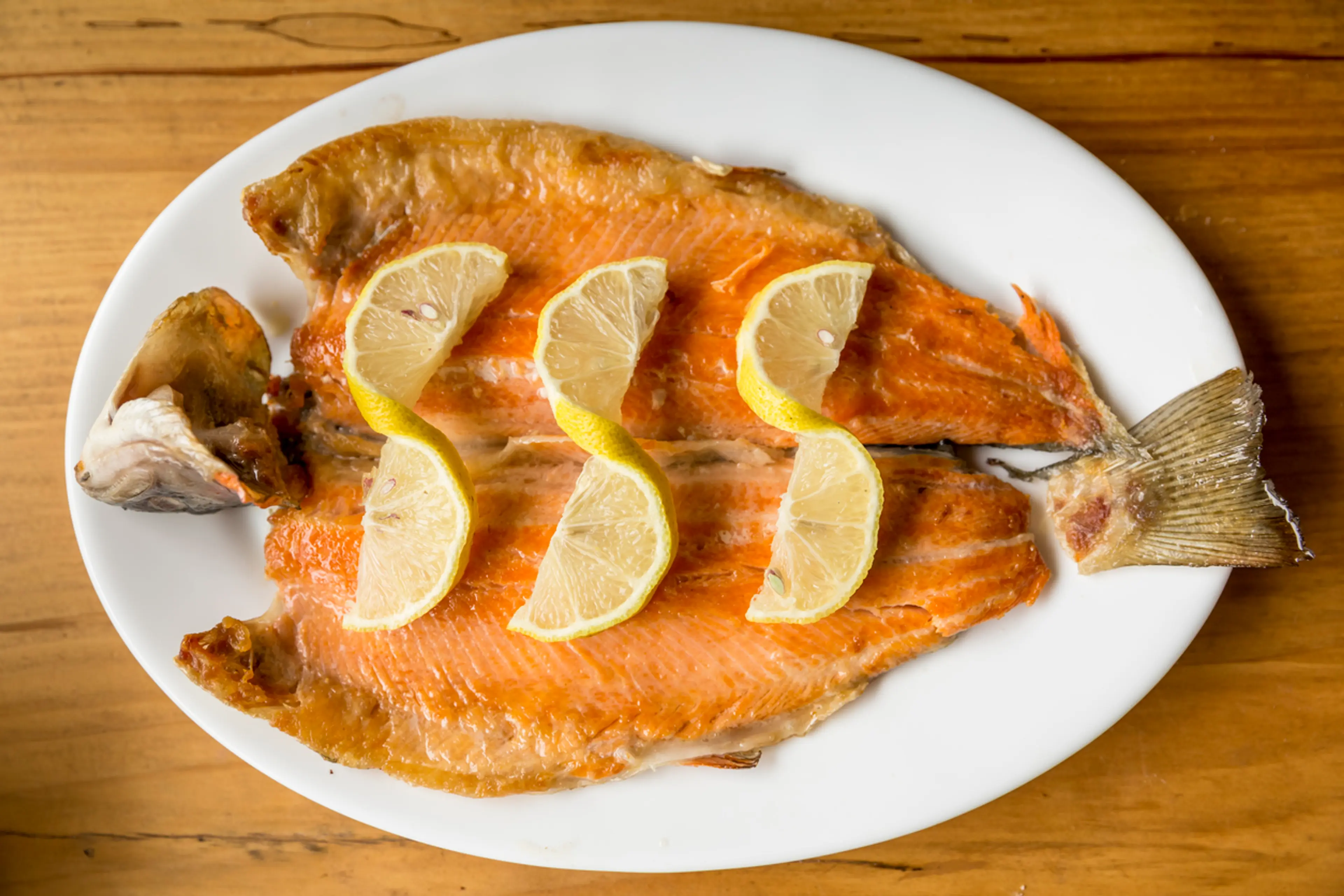
Trucha
Trucha, or trout, is a popular dish in Argentine Patagonia due to the region's abundant freshwater rivers and lakes. The fish is often grilled or baked and served with local herbs and vegetables.

Empanadas
Empanadas are a staple food in Argentina. These pastries are filled with a variety of ingredients, such as meat, cheese, or vegetables. In Patagonia, lamb or seafood empanadas are popular.
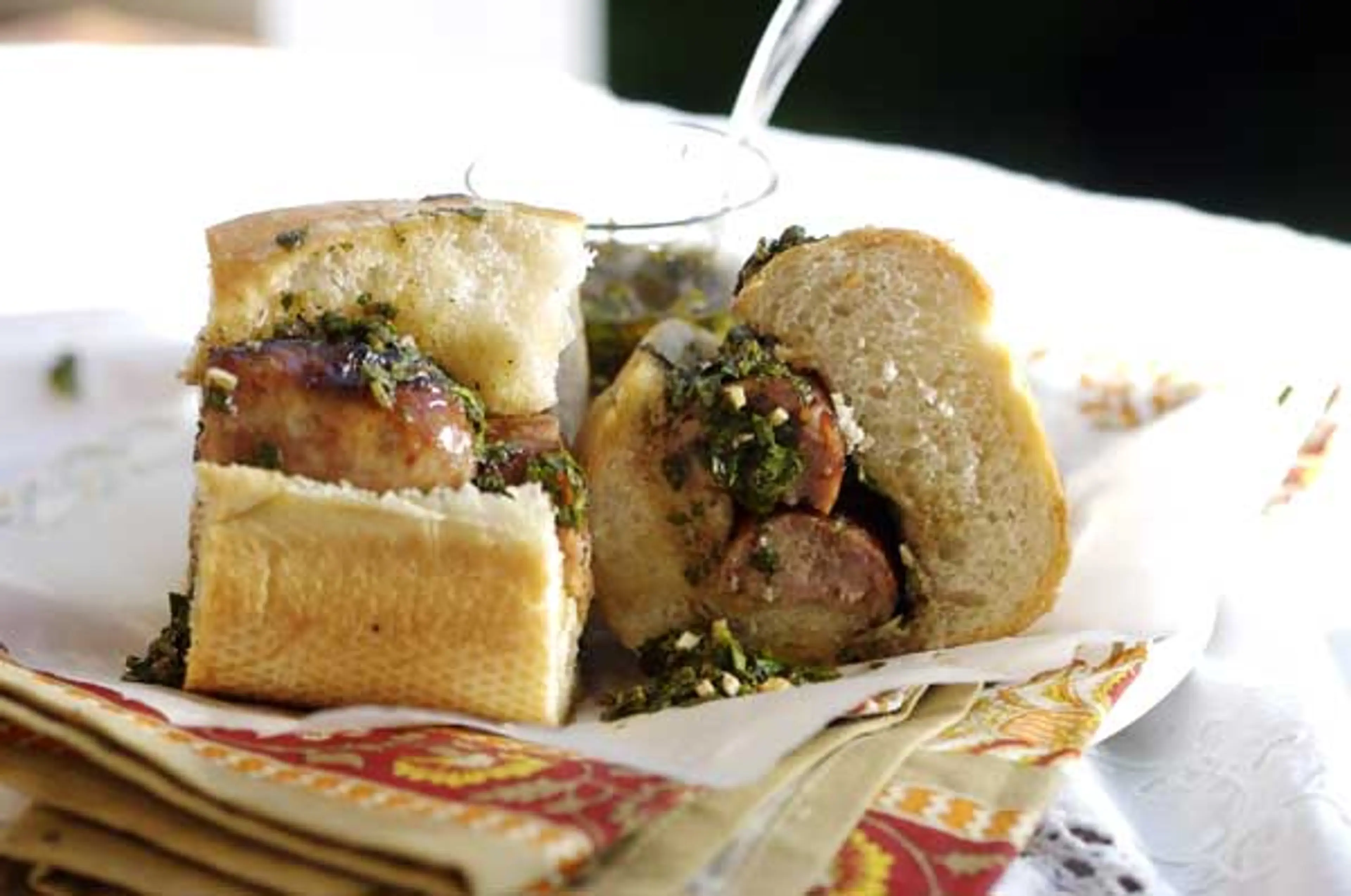
Choripán
Choripán is a popular street food in Argentina, made of grilled chorizo (a type of sausage) served in a bread roll. It's a simple, hearty snack that's perfect for a quick bite while exploring Patagonia.
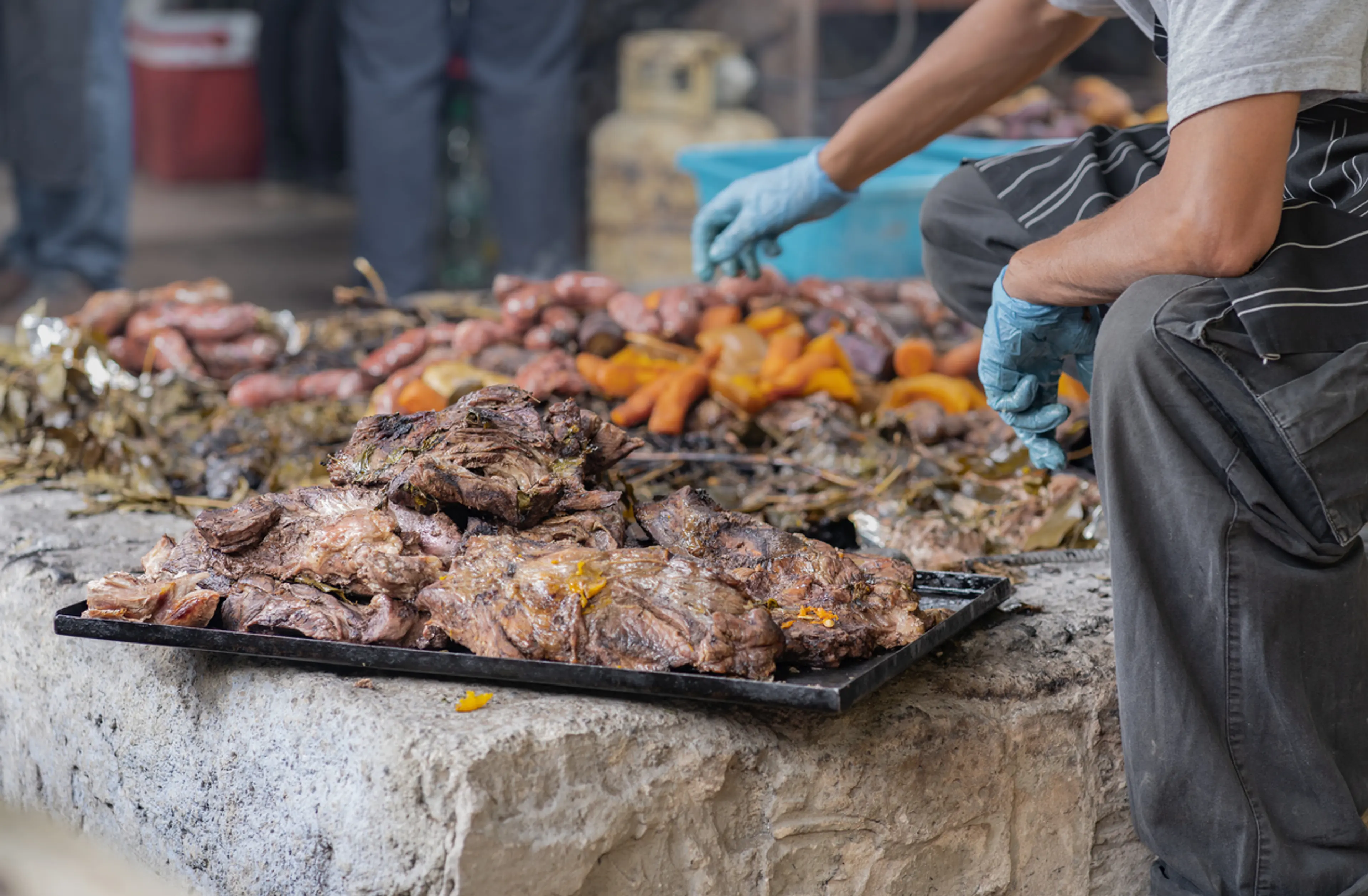
Curanto
Curanto is a traditional dish of the indigenous Mapuche people of Patagonia. It's a stew made with a variety of meats, seafood, potatoes, and vegetables, all cooked in a hole in the ground lined with hot stones.
Calafate Berry Ice Cream
Calafate is a berry native to Patagonia and is often used to make ice cream. The berry has a sweet, slightly tart flavor, and the ice cream is a refreshing treat after a day of exploring.
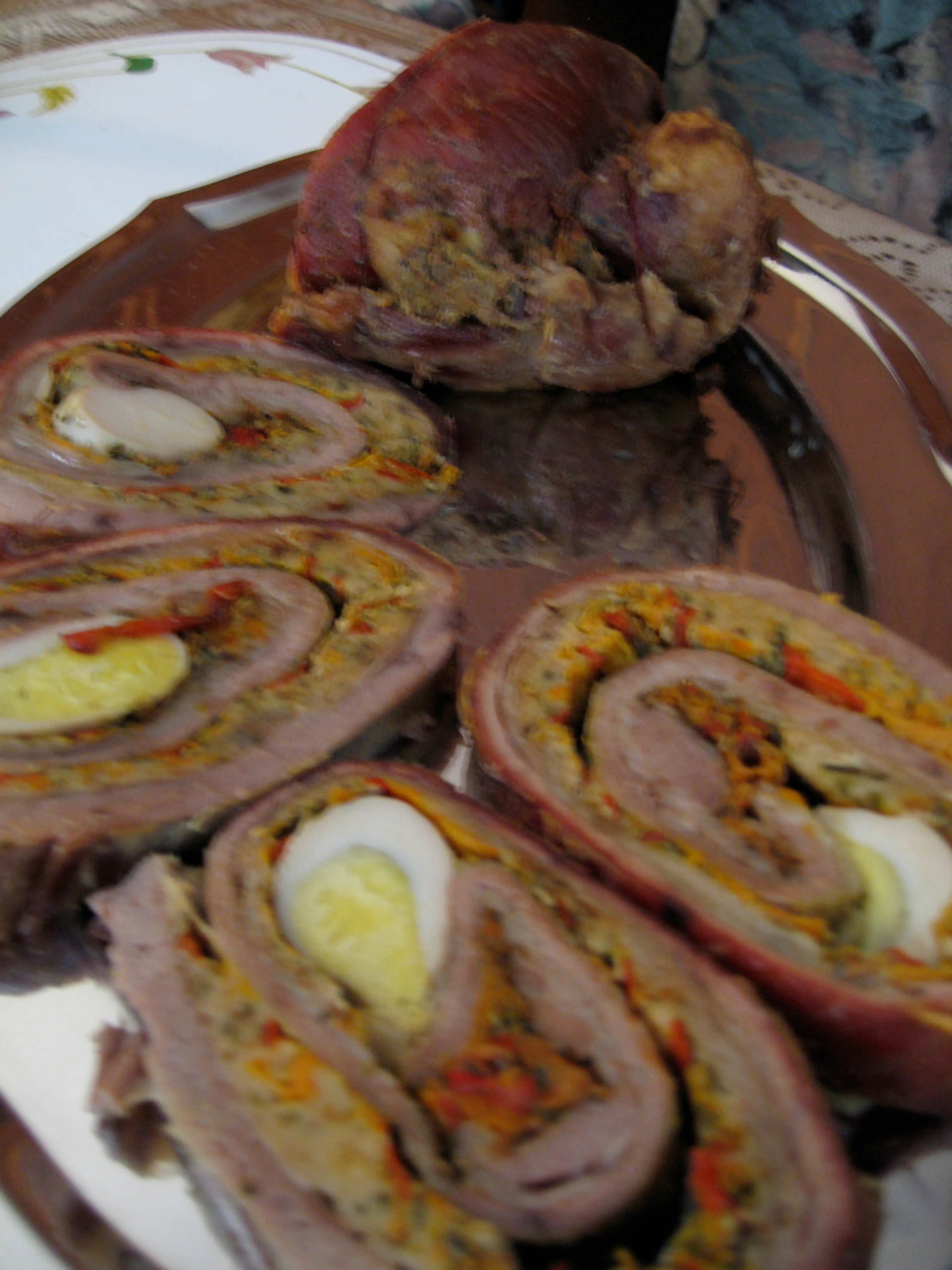
Matambre
Matambre is a rolled meat dish, typically made from flank steak, vegetables, hard-boiled eggs, and herbs. It's a flavorful, filling dish that's a favorite in Patagonia.
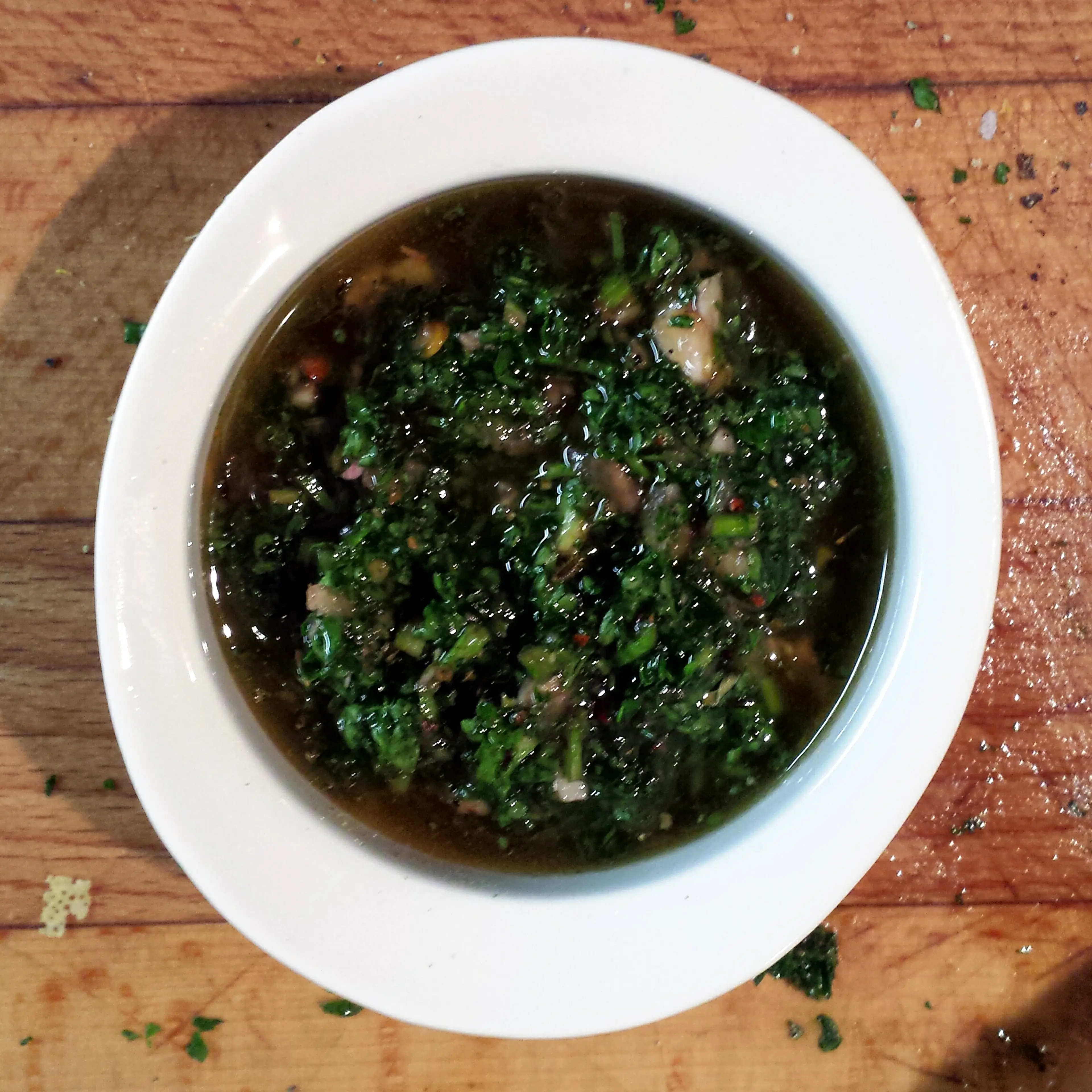
Chimichurri
Chimichurri is a traditional Argentine condiment made from parsley, garlic, vinegar, and oil. It's often served with grilled meats and adds a burst of flavor to any dish.
Fernet con Coca
Fernet con Coca is a popular cocktail in Argentina, made with Fernet, a type of bitter, aromatic spirit, and Coca-Cola. It's a unique, acquired taste that's worth trying when in Patagonia.

Yerba Mate
Yerba Mate is a traditional Argentine drink made from the leaves of the yerba mate plant. It's a social drink, often shared among friends, and is a big part of the local culture in Patagonia.

Malbec Wine
While Malbec wine is produced in several regions of Argentina, the Patagonian variant is known for its deep color and intense fruity flavors. It's a perfect accompaniment to the region's hearty meat dishes.

Dulce de Leche
Dulce de Leche is a sweet, caramel-like sauce that's a staple in Argentine desserts. It's often spread on bread for breakfast, used as a filling for cakes and pastries, or simply eaten by the spoonful.
Best time to visit
The best time to visit Argentine Patagonia is during the summer months from December to March. During this time, the weather is warm and the days are longer, providing ample opportunity to explore the stunning landscapes. However, if you're interested in winter sports like skiing, the winter months of June to August would be ideal. Please note that Patagonia's weather can be unpredictable, so it's always a good idea to pack for all conditions.
How to get around
Air Travel
The quickest way to get to Argentine Patagonia is by air. The main airports are in Bariloche, El Calafate, Ushuaia, and Trelew. From Buenos Aires, there are daily flights to these cities. Aerolineas Argentinas and LATAM are the main airlines operating in the region.
Bus Travel
Long-distance buses are a popular mode of transport in Argentina. They are comfortable and relatively inexpensive. There are regular bus services from Buenos Aires to various destinations in Patagonia. The journey can be long, but the buses are equipped with reclining seats, air conditioning, and sometimes even a meal service.
Car Rental
Renting a car gives you the freedom to explore Patagonia at your own pace. The roads are generally in good condition, but be prepared for long distances between towns. Make sure to have a good map or GPS. Remember that in Argentina, you drive on the right-hand side of the road.
Ridesharing
Ridesharing services like Uber are not widely available in Patagonia. However, in larger towns and cities, you may find local ridesharing apps. Always check the current situation before relying on this method of transport.
Train Travel
Train services in Patagonia are limited. The Old Patagonian Express, also known as 'La Trochita', is a vintage steam train that runs between Esquel and El Maiten. It's more of a tourist attraction than a practical means of transport.
Hiking
Patagonia is a hiker's paradise. There are numerous trails, ranging from easy walks to challenging multi-day treks. Always check the weather conditions before setting out, and make sure you have appropriate gear.
Boat Travel
Boat trips are a great way to explore the lakes and fjords of Patagonia. There are regular services on Lake Nahuel Huapi in Bariloche, and on Lake Argentino in El Calafate. You can also take a boat to the stunning Perito Moreno Glacier.
Bicycle
Cycling is a popular way to get around in some parts of Patagonia. The region's vast landscapes and low traffic make it a great place for bike touring. However, be prepared for strong winds and steep hills.
Important information
Currency$ ARS
Time zoneUTC-3
Driving sideRight
Emergency phoneAmbulance: 101; Fire: 107; Police: 101
Drinking waterOpt for bottled water
Power sockets
Voltage220 V
Things to know about Argentine Patagonia, Argentina as a first time visitor
1
Argentine Patagonia is located in the southern part of Argentina and is known for its stunning landscapes and diverse wildlife.
2
The region is vast, so plan your trip according to the specific areas you want to visit.
3
The climate in Patagonia can be unpredictable. It can be sunny one moment and rainy the next, so pack accordingly.
4
The best time to visit Argentine Patagonia is during the summer months (December to March) when temperatures range from 40°F to 65°F (4°C to 18°C).
5
During winter months (June to August), temperatures can drop below freezing, so pack warm clothing if you plan to visit during this time.
6
The local currency is the Argentine Peso (ARS). Credit cards are widely accepted, but it's always good to have some cash on hand.
7
Spanish is the official language in Argentina. While some people speak English, especially in tourist areas, it's helpful to know some basic Spanish phrases.
8
Argentina operates on Argentina Time Zone (ART), which is 3 hours behind Coordinated Universal Time (UTC-3).
9
Argentina uses the Type I plug. The standard voltage is 220 V, and the standard frequency is 50 Hz.
10
Public transportation is available but can be limited in remote areas. Renting a car can give you more flexibility to explore.
11
Argentine Patagonia is known for its outdoor activities such as hiking, fishing, and wildlife watching. Make sure to pack appropriate gear.
12
Always respect the local environment and wildlife. Follow the 'leave no trace' principle.
13
Healthcare facilities are available in larger towns and cities, but can be limited in remote areas. It's advisable to have travel insurance that covers medical evacuation.
14
Tap water is generally safe to drink in Argentina, but bottled water is recommended in remote areas.
15
Argentina's cuisine is heavily meat-based. Vegetarians might find fewer options, but most places offer pasta and pizza.
16
Tipping is customary in Argentina. A tip of 10% is usually expected in restaurants.
17
Argentina has a relaxed attitude towards time. Don't be surprised if things start later than scheduled.
18
Always keep your personal belongings secure and be aware of your surroundings, especially in crowded areas.
19
Argentina has a reciprocal fee policy for some countries. Check if this applies to your country before you travel.
20
Lastly, remember to relax and enjoy the stunning beauty of Argentine Patagonia. It's a trip of a lifetime!
Basic Spanish to know as a first time visitor
English phrase | Native phrase | Pronunciation | When to use it |
|---|---|---|---|
Hello | Hola | O-la | Greeting someone |
Goodbye | Adiós | A-dee-os | Leaving someone |
Please | Por favor | Por fa-vor | Making a request |
Thank you | Gracias | Gra-see-as | Showing appreciation |
Yes | Sí | See | Agreeing with someone |
No | No | No | Disagreeing with someone |
Excuse me | Perdón | Per-don | Getting someone's attention |
I'm sorry | Lo siento | Lo see-en-to | Apologizing |
Do you speak English? | ¿Hablas inglés? | Ab-las in-gles | Asking if someone speaks English |
I don't understand | No entiendo | No en-tee-en-do | When you don't understand what was said |
Where is...? | ¿Dónde está...? | Don-de es-ta | Asking for directions |
Bathroom | Baño | Ban-yo | Looking for a bathroom |
Help | Ayuda | A-yu-da | In case of emergency |
Food | Comida | Co-mee-da | Looking for a place to eat |
Water | Agua | A-gwa | Asking for water |
Beer | Cerveza | Ser-ve-za | Ordering a beer |
Wine | Vino | Vee-no | Ordering wine |
How much does it cost? | ¿Cuánto cuesta? | Kwan-to kwes-ta | Asking for the price |
I would like... | Me gustaría... | Me gus-ta-ree-a | Making a request |
Good night | Buenas noches | Bwe-nas no-ches | Saying goodnight |
Packing List
Clothing
Thermal underwear
Warm socks
Waterproof hiking boots
Insulated pants
Long-sleeve shirts
Fleece jacket
Waterproof windbreaker
Gloves
Beanie
Scarf
Swimsuit
Casual clothes for evenings
Sunglasses
Toiletries
Travel-size shampoo and conditioner
Travel-size body wash
Toothbrush and toothpaste
Deodorant
Razor and shaving cream
Sunscreen
Lip balm
First aid kit
Prescription medications
Hand sanitizer
Travel documents and essentials
Passport
Driver's license
Credit and debit cards
Cash in local currency
Travel insurance documents
Hotel and tour reservations
Emergency contact information
Electronics and gadgets
Smartphone
Charger for smartphone
Power bank
Camera
Memory cards for camera
Headphones
Travel adapter
Miscellaneous items
Travel pillow
Earplugs
Sleep mask
Reusable water bottle
Snacks
Books or e-reader for entertainment
Travel guidebook
Maps
Backpack for day trips
Binoculars
Trekking poles
Weather Conditions
When planning a trip to Argentine Patagonia, it's essential to consider the weather, as it can greatly impact your travel experience. The region is known for its unpredictable weather, with rapid changes often occurring within a single day. The summer months (December to February) are the warmest and most popular for tourists. During this time, temperatures typically range from 40°F to 70°F (4°C to 21°C). However, it's still important to pack layers, as evenings can be cool and sudden weather changes can occur. The winter months (June to August) are much colder, with temperatures often dropping below freezing. If you plan to visit during this time, be prepared for temperatures between 30°F and 50°F (-1°C to 10°C). Snowfall is common, especially in the Andes, making it a great time for winter sports enthusiasts. The shoulder seasons of spring (September to November) and autumn (March to May) can offer a balance of fewer tourists and milder weather. However, these periods can also be windy, particularly in the spring. Regardless of when you visit, it's crucial to pack for all weather conditions. Waterproof clothing is a must due to frequent rain showers. Sunscreen is also essential, as the ozone layer is thinner in Patagonia, increasing the risk of sunburn. Remember, the weather can change rapidly in Patagonia, so always check the local forecast before heading out for the day. This will help you dress appropriately and plan your activities accordingly.
| Month | Hi / Lo (°C) | Weather Overview |
|---|---|---|
January | 24° / 8° | January is the warmest month in Argentine Patagonia, with long daylight hours perfect for outdoor activities. |
February | 23° / 8° | February is still warm, with slightly less daylight hours than January, but still great for outdoor exploration. |
March | 20° / 6° | March sees the start of autumn, with cooler temperatures and beautiful fall foliage. |
April | 15° / 3° | April is a cooler month with less tourists, offering a peaceful time to visit. |
May | 10° / 0° | May is the start of winter, with temperatures dropping and snowfall beginning in the mountains. |
June | 7° / -2° | June is a winter month with the shortest daylight hours, perfect for winter sports like skiing. |
July | 7° / -2° | July is the coldest month, with snow-covered landscapes and ideal conditions for winter sports. |
August | 9° / -1° | August sees the end of winter, with temperatures starting to rise slowly. |
September | 13° / 1° | September is the start of spring, with temperatures rising and flowers starting to bloom. |
October | 17° / 3° | October offers pleasant spring weather, with longer daylight hours and beautiful landscapes. |
November | 19° / 5° | November is a mild month, with temperatures comfortable for hiking and other outdoor activities. |
December | 22° / 7° | December is the start of summer, with warm temperatures and long daylight hours, perfect for exploring the outdoors. |
Did you know?
Places near by Argentine Patagonia, Argentina
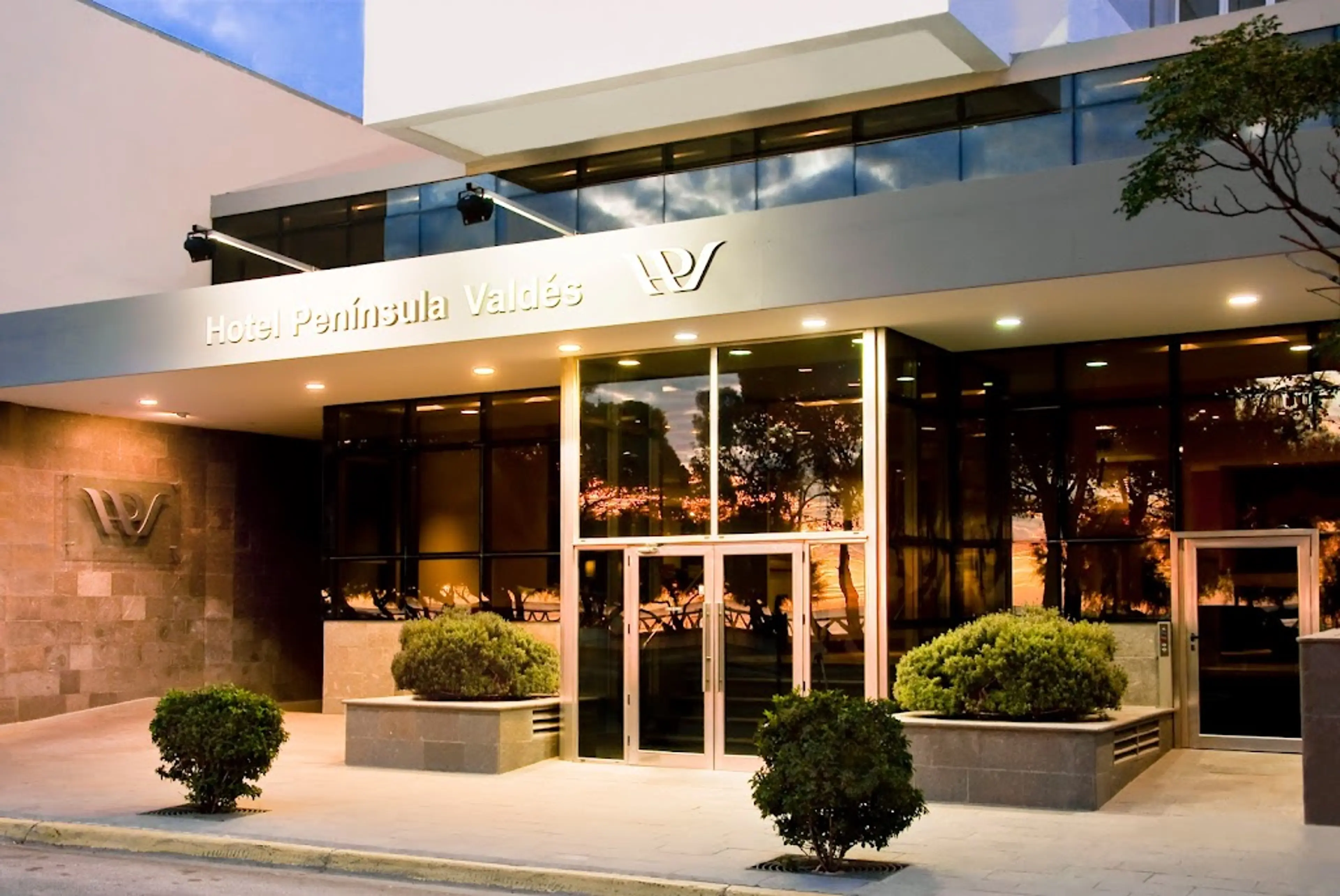
Valdes Peninsula
A nature reserve that is home to an important breeding population of the endangered southern right whales.
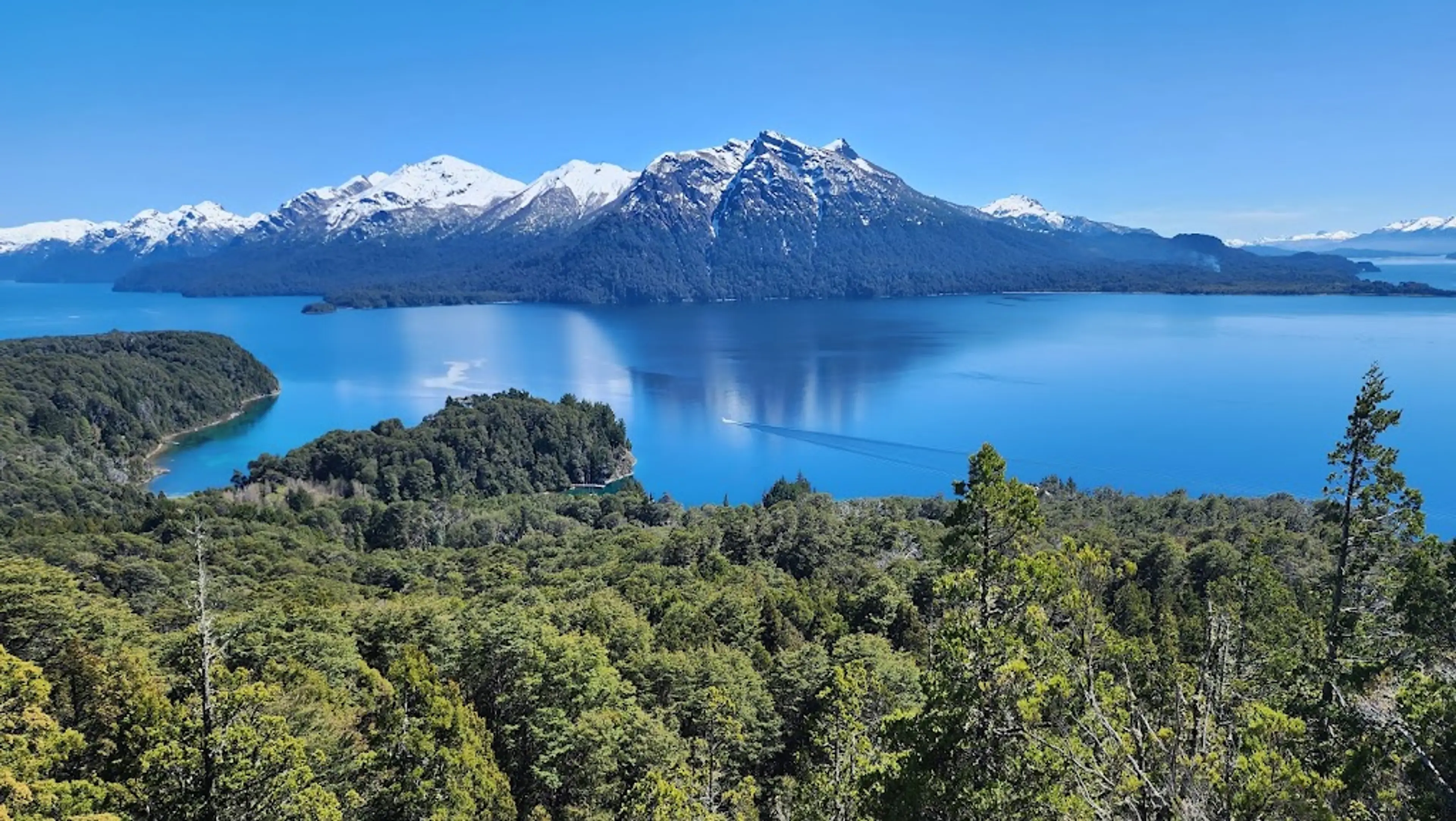
Bariloche
Known for its Swiss alpine-style architecture and its chocolate, it is a place of stunning natural beauty.

El Calafate
Gateway to Los Glaciares National Park, home to the massive Perito Moreno Glacier.

Ushuaia
The southernmost city in the world, located on the Beagle Channel.

Puerto Montt
Known for its beautiful landscapes that include the Osorno Volcano and the Llanquihue Lake.

Punta Arenas
The capital city of Chile's southernmost region, Magallanes and Antartica Chilena.
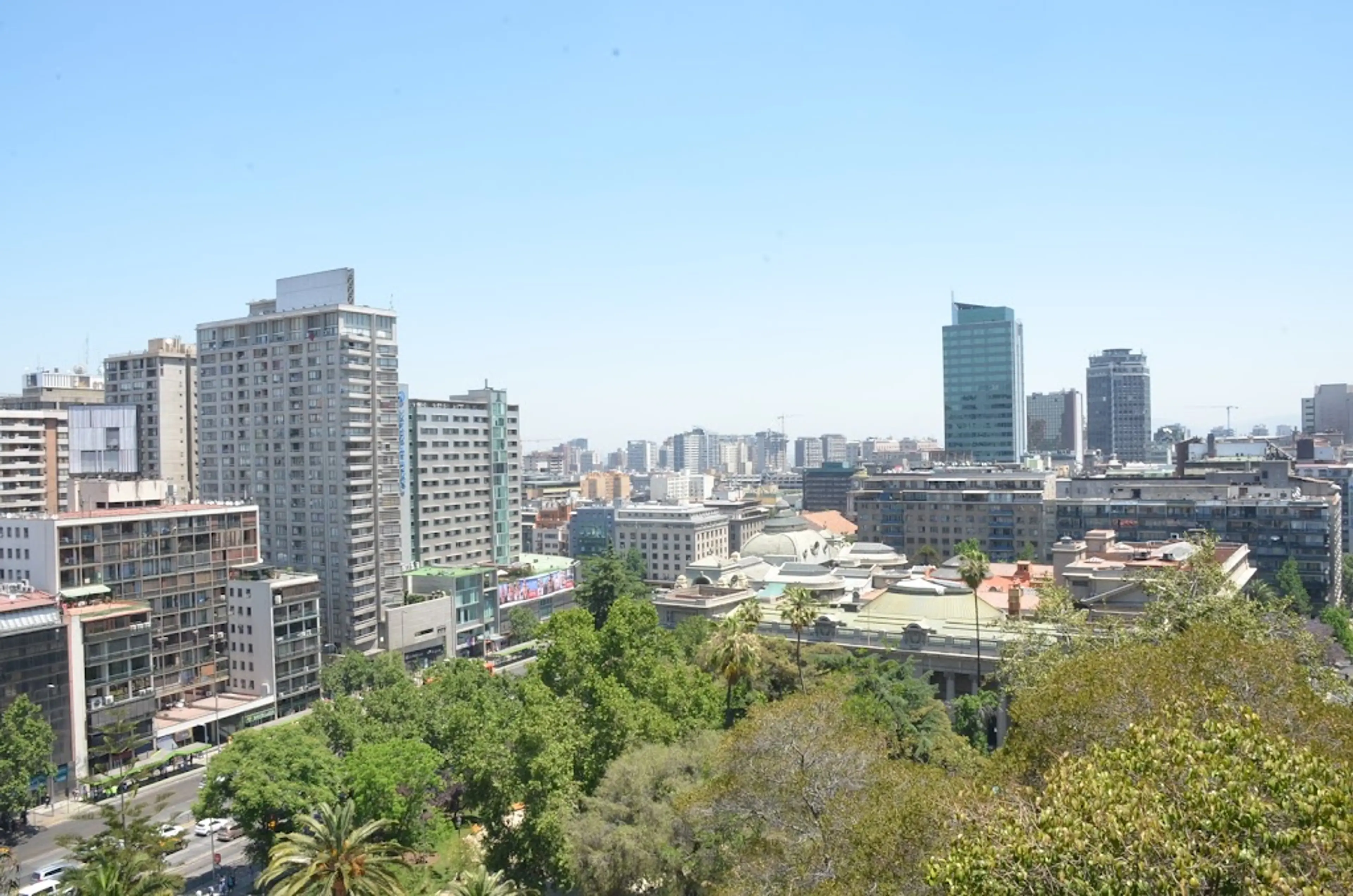
Santiago
The capital of Chile, a city with a mix of modern and colonial architecture.
